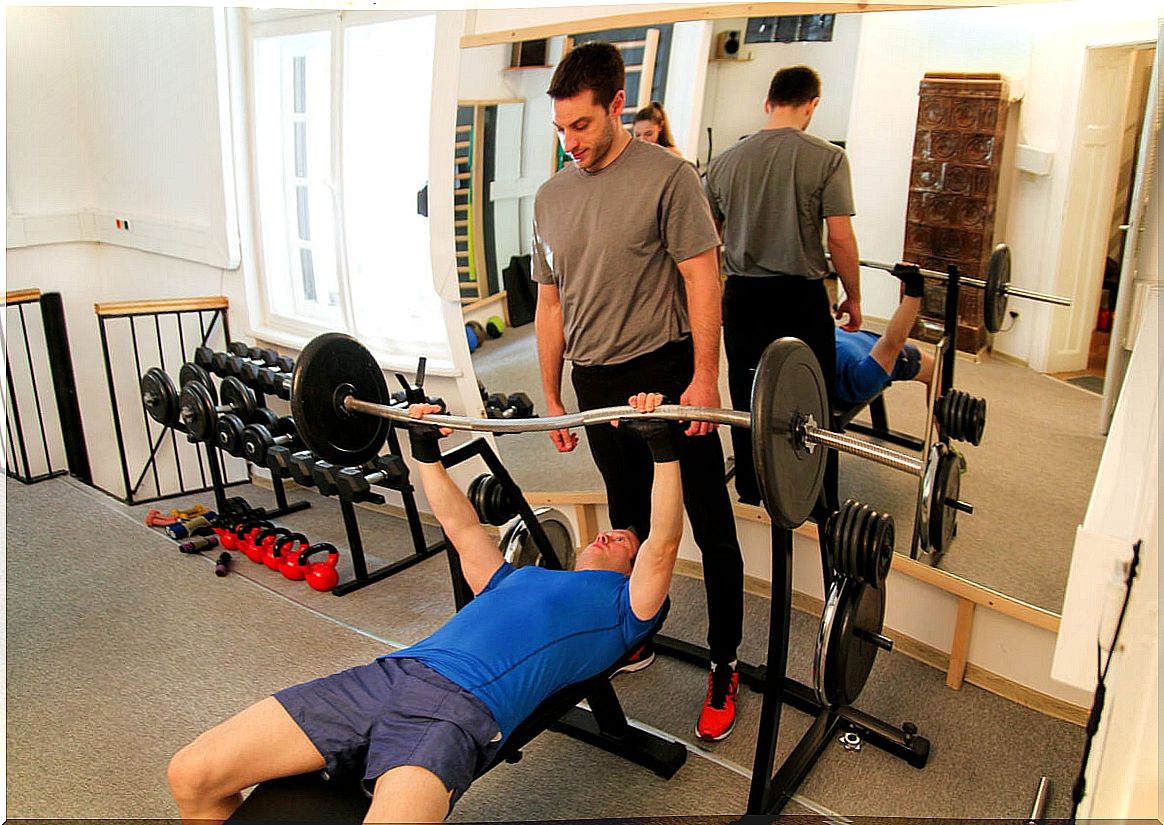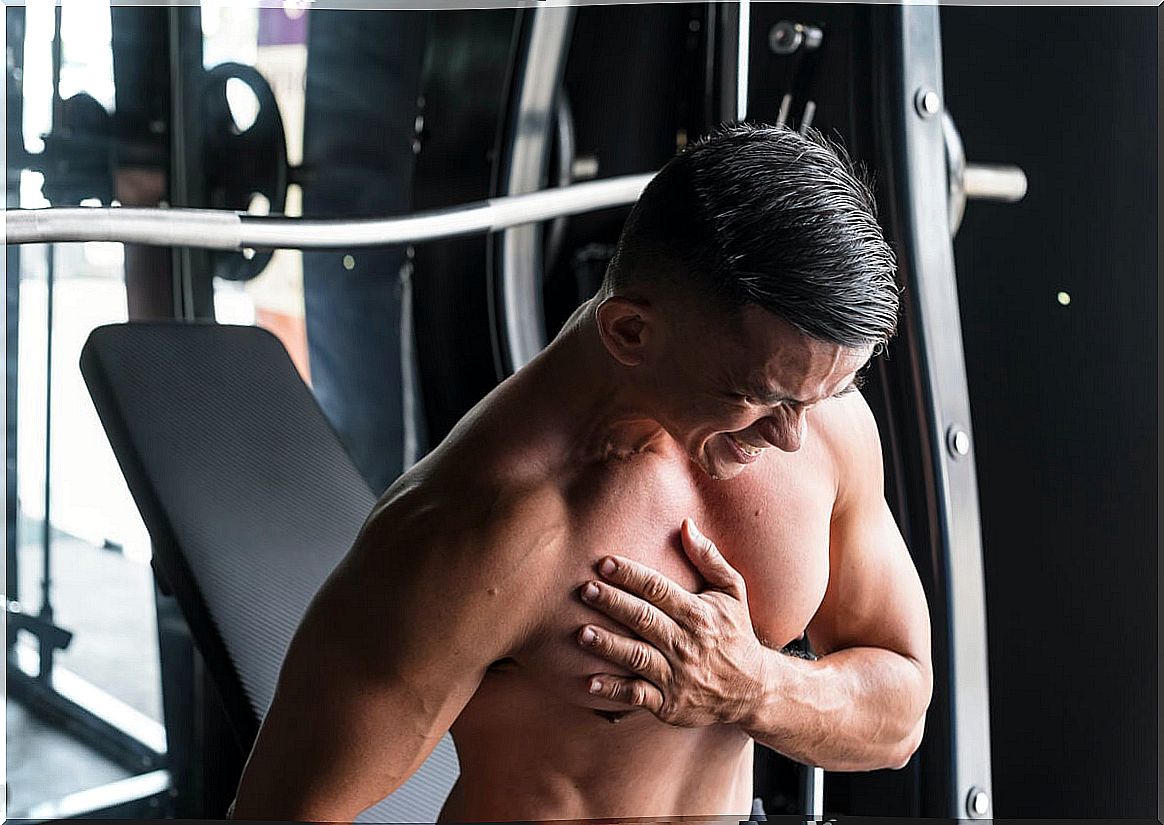Bench Chest Exercise: Incline Or Flat?
The chest bench exercise, known as the bench press , is a basic muscle-building movement whose benefits for chest and shoulder development are undeniable. Now, is it more advisable to do it on a flat bench or an inclined bench?
The difference in bench placement lies in the way the muscles are activated. In this sense, it should be noted that one way to achieve a more balanced pectoral musculature is, precisely, to combine work.
What is the incline bench chest?
The incline bench press is performed with the bench positioned at a higher angle, between 15 and 50 degrees. Usually it is between 15 and 30 degrees, since any higher value works the anterior delts (shoulders).
This exercise focuses on the upper part of the pecs (the clavicular head) and the anterior delts (the area between the pecs and the front of the shoulders). In fact, the incline chest is excellent for strengthening these muscle groups.
Many people like the flat bench exercise less than the flat bench exercise because the latter tend to be able to move more weight. But this is not a problem. The important thing here is to look at the results.
Keep in mind that the higher the incline of the bench, the more the exercise will target the shoulders and delts.
How to do the incline bench chest exercise
To start, lie on the incline bench positioned at an angle between 15 and 30 degrees. The grip should be where the elbows form a 90 degree angle.
Next, with a shoulder-width grip, wrap your fingers around the bar with your palms facing out. Pick up the bar and hold it straight over you with your arms closed.
Then slowly lower yourself until the bar is close to your chest. It should be in line with your upper chest at all times. As for the arms, they should be at a 45 degree angle and glued to the sides.
Hold the position for a moment and then push the bar up to its starting position. Lock your arms, hold your low up, and then slowly lower yourself back down.

Profits
As we have seen, the main benefit of doing the incline chest is developing the upper part of the pectoral muscles. In this regard, as it puts more pressure on the upper pectoral, this will help fill an area that appears to be lagging for many lifters.
On the other hand, the incline bench places your shoulders in a more secure position when pressing and raising the bar. The incline position will help reduce stress and keep your rotator cuffs healthy.
In addition , when performed with dumbbells it allows you to add additional work for the upper pecs after you have exhausted the pecs and triceps. What’s more, using dumbbells on a flat bench has all the benefits of a barbell bench chest exercise.
Finally, just by changing the grip width you get a movement that exerts pressure on different areas of the chest. They can be used in a training routine in a dynamic way.
Cons
The incline bench press is a great exercise for building muscle, but it also has some negatives associated with lifting. One of them has to do with the fact that the incline bench recruits the same muscles that are used in other pressing movements.
Therefore, if you do not have a balanced strength training routine, you will ease muscle imbalances that can create shoulder problems.
On the other hand, if it is not done properly, it is very possible that the muscles that are believed to be working will not be worked. What’s more, the risk of injury is high.
What is flat bench chest?
For many professionals, the flat bench exercise is one of those that should be incorporated into a training program to be most effective and develop a balanced and muscular physique.
The flat bench press works the entire pectoralis major, both upper and lower. When doing the exercise, both heads become uniform, which makes for a better general development.
How to Do the Flat Bench Chest
Lie down on the flat bench so that your head and neck are supported. Your knees should be at a 90-degree angle with your feet flat on the ground.
Get under the bar so that it is aligned with your chest. Your hands should be slightly wider than your shoulders, with your elbows bent at a 90-degree angle. Hold the bar with your palms facing away from you, with your fingers wrapped around it.
From this position, push the bar toward the ceiling using pectoral muscles. Stretch your arms and tighten your chest. Then , lower the bar without resting. Come back to the starting position.
If you are using dumbbells to do this exercise, be careful not to drop them to the side when you are done using them. This is dangerous for the rotator cuff.
Profits
The flat bench press is a simple and effective exercise to develop the pectoral muscles. Plus, it requires minimal equipment, making it a very accessible exercise.
Only by making a change in the grip width can pressure be achieved in different areas of the chest, which can vary the training routines for a more harmonious muscle development.
On the other hand, using dumbbells in the flat bench press will also provide additional benefits, as they allow you to move your arms in a more natural and independent way.
Cons
One thing to keep in mind is that the flat bench exercise places your shoulders in a position that could cause injury if you don’t take good care of your execution. Especially to the previous position.
On the other hand, if you abuse the movement you run the risk of suffering shoulder injuries from repetitive use. Even muscle tears can occur in the pectorals.
There is also the decline press
A third version of the bench chest exercise is performed with the bench declined, that is, backwards, leaving the head below waist level, between 15 and 30 degrees.
Targets the lower part of the lower pectoral more efficiently than the flat or incline bench press . In general, it is considered safer than the traditional one, as it takes the strain off the shoulders.
The biggest benefit is the increased muscle activation in the lower part of the pecs. However, this is a superficial muscle area. In fact, it is usually only used by bodybuilders.
On the other hand, since the torso and head are positioned lower than the rest of the body, this exercise can be uncomfortable for some people.

Bench chest injury prevention and care
When doing the bench chest exercise, whatever the position, the first thing to consider is the placement of the arms and the general posture of the body. Second is technical execution.
If the exercises are not done correctly, the risk of injury is very great, especially in the shoulder area. Another no less important issue that must be taken into account is the care with the loads.
It can seem spectacular to move large loads and it is tempting to achieve a large volume with these exercises. However, if they are excessive they represent a risk.
The bench press is a demanding exercise that requires a good warm-up beforehand to prepare the muscles involved. Finally, we cannot fail to mention stretching to regain muscle elasticity in the pectorals and shoulders.









